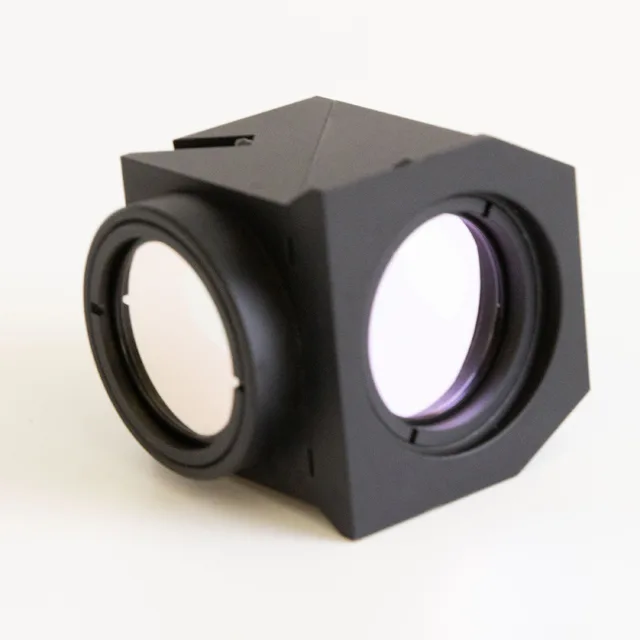Introduction
Researchers and scientists can now explore the world of fluorescence imaging with clarity and precision never before possible thanks to Fluorescence Microscope Filters, which have revolutionised the discipline of microscopy. We explore the techniques for superb image with these cutting-edge filters in this extensive article. We will go over all you need to know about Fluorescence Microscope Filters, from comprehending their principles and applications to revealing the fluorescence’s undiscovered beauties.
Fluorescence Microscope Filters: Unveiling the Mysteries of Fluorescence
Intricate details within cells and tissues can be seen and studied by scientists thanks to the interesting optical phenomena known as fluorescence. The choice and effective application of fluorescence microscope filters is the secret to superb fluorescence imaging. The well-known microscopy brand has created cutting-edge filters that are essential to obtaining excellent outcomes. What distinguishes Fluorescence Microscope Filters from the competition, then? Let’s examine their distinctive qualities and operation.

Understanding the Working of Fluorescence Microscope Filters
Fluorescence microscope by Filters are expertly crafted optical components used in fluorescence microscopy to regulate the excitation and emission light. These filters work by transmitting some wavelengths of light while blocking others, which is known as the spectral separation concept. There are two main categories of filters:
Excitation Filters:
The specimen is illuminated with focused light thanks to these filters, which only permit the excitation wavelength to pass through. They successfully cut down on undesirable dispersed light, enhancing contrast and minimising photobleaching.
Emission Filters:
While blocking the excitation light, emission filters, on the other hand, allow the fluorophore’s emission wavelength to pass through. This guarantees that the signal being detected is clear and devoid of any background noise.
The Advantages of Fluorescence Microscope Filters
The numerous benefits that Fluorescence Microscope Filters provide distinguish them as the top option for scientists and researchers:
Reduced Phototoxicity:
These filters reduce phototoxicity, averting cell damage and maintaining the specimen’s viability across prolonged imaging sessions by effectively blocking off excitation light.
Excellent Image Quality:
The cutting-edge coating technologies from guarantee little light loss while retaining image brightness and contrast for superb visualisation.
Compatibility and Versatility:
Flexible experimental settings are made possible by the smooth integration of Fluorescence Microscope Filters into a variety of microscope models.
Applications of Fluorescence Microscope Filters
Fluorescence filters are frequently used in fields of study ranging from cell biology to neuroscience. Several well-known applications consist of:
Live Cell Imaging:
Optolong filters offer extended live-cell imaging, recording dynamic cellular processes with accuracy because to their reduced phototoxicity and good SNR.
Immunofluorescence Staining:
The sensitivity of immunofluorescence staining is increased by Fluorescence Microscope Filters, enabling scientists to identify and examine certain biological components.
Fluorescence Resonance Energy Transfer (FRET):
Optolong filters effectively separate donor and acceptor fluorophores during FRET investigations, enabling precise FRET measurements.

FAQs: Frequently Asked Questions
How are the imaging qualities enhanced by Fluorescence Microscope Filters?
A: By offering spectrum separation, lowering phototoxicity, and preserving outstanding SNR, Optolong filters improve imaging quality and produce clearer, more accurate images.
Do all microscopes work with Fluorescence Microscope Filters?
A: Yes, Optolong filters are made to work with a variety of microscope models and offer convenience and adaptability.
Can I image live cells with Fluorescence Microscope Filters?
A: Definitely! Optolong filters are the best for live cell imaging because of their lower phototoxicity, which allows for longer observations without endangering cell viability.
How can Optolong filters aid fluorescence resonance energy transfer (FRET) tests?
A: In FRET investigations, Optolong filters effectively isolate the donor and acceptor fluorophores, allowing for accurate analysis and precise FRET measurements.
How do emission filters work in fluorescence microscopy?
A: Fluorescence microscopy uses emission filters to ensure clear and interference-free signals by blocking excitation light and allowing only the emitted light to pass through.
Does immunofluorescence staining benefit from Optolong Fluorescence Microscope Filters?
A: Yes, Optolong filters improve the clarity and sensitivity of immunofluorescence staining, allowing researchers to more clearly detect and analyse particular cellular components.
Conclusion
The secret of fluorescence microscopy’s outstanding imaging lies in the use of Optolong Fluorescence Microscope Filters. These filters provide improved image quality, decreased phototoxicity, and unmatched versatility thanks to their cutting-edge design and distinctive features. Researchers can delve further into the world of fluorescence and uncover the mysteries of cells and tissues by using Fluorescence Microscope Filters. Optolong filters are essential equipment for contemporary microscopy, whether it be for live cell imaging or FRET investigations.
